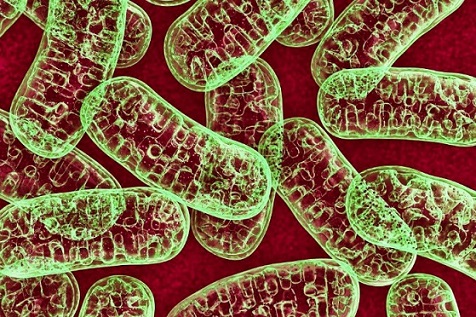Polydatin and Nicotinamide Help Reduce Iron Buildup and Cell Damage in Mitochondrial Diseases
Nikhil Prasad Fact checked by:Thailand Medical News Team Feb 17, 2025 1 month, 3 weeks, 3 days, 7 hours, 50 minutes ago
Medical News: Understanding the Link Between Iron and Mitochondrial Diseases
Mitochondrial diseases are a group of rare conditions caused by problems in the cell’s energy factories - mitochondria. These diseases often result in nerve and muscle issues, fatigue, and a range of severe complications. A new study led by researchers from the Centro Andaluz de Biología del Desarrollo (CABD-CSIC-Universidad Pablo de Olavide) in Spain, along with scientists from the University of Valencia and Hospital Universitario Virgen Macarena, has found that two natural compounds, polydatin and nicotinamide, may help prevent harmful iron buildup and cell damage in mitochondrial disease models.
 Polydatin and Nicotinamide Help Reduce Iron Buildup and Cell Damage in Mitochondrial Diseases
Polydatin and Nicotinamide Help Reduce Iron Buildup and Cell Damage in Mitochondrial Diseases
This
Medical News report highlights the critical findings of this study, which suggests that excessive iron accumulation and lipid peroxidation contribute significantly to mitochondrial disease progression. Researchers aimed to determine whether polydatin and nicotinamide could help counteract these damaging effects.
The Role of Iron in Mitochondrial Diseases
Iron is essential for many cellular functions, but excessive iron can be harmful. When too much iron accumulates in cells, it can trigger a type of cell damage known as ferroptosis, leading to oxidative stress and further cell destruction. The study focused on fibroblasts (skin cells) and induced neurons (nerve-like cells) from patients with mitochondrial diseases linked to mutations in the GFM1 gene, which disrupts mitochondrial function.
Researchers found that cells from these patients had abnormally high levels of iron and a buildup of a harmful substance called lipofuscin, a byproduct of cell stress. Additionally, these cells showed increased lipid peroxidation - a process where fats in the cell membrane are damaged, leading to further cell breakdown.
How Polydatin and Nicotinamide Work
Polydatin, a compound found in plants like grapes, and nicotinamide, a form of vitamin B3, have been known for their antioxidant and protective properties. Scientists tested whether these two substances could reduce the toxic effects of iron overload and lipid peroxidation in mitochondrial disease models.
After treating diseased cells with polydatin and nicotinamide, researchers observed several improvements:
-Reduced Iron Buildup: Prussian Blue staining and advanced imaging showed that treated cells had significantly lower iron accumulation.
-Lower Lipid Peroxidation: The treatment reduced damage to the cell membranes caused by excess iron and oxidative stress.
-Increased Antioxidant Activity: Cells treated with these compounds had higher levels of glutathione (GSH), a natural antioxidant that protects against damage.
-Restored Iron
Metabolism: Levels of proteins involved in iron transport and storage returned closer to normal.
The Impact on Nerve Cells
Since mitochondrial diseases often affect the nervous system, researchers also tested the treatment on induced neurons - cells that function like nerve cells but are generated from skin cells. Just like in fibroblasts, the treatment successfully reduced iron accumulation and lipid peroxidation in these nerve-like cells, suggesting potential benefits for protecting the nervous system.
Can This Treatment Prevent Cell Death
One of the key concerns in mitochondrial diseases is ferroptosis, a type of iron-driven cell death. The study found that diseased cells were more vulnerable to ferroptosis when exposed to a stressor called erastin. However, after treatment with polydatin and nicotinamide, the cells became significantly more resistant to this form of cell death, showing that these compounds may help protect against disease progression.
Potential for Future Therapies
Although this study was conducted in cell models, the results are promising for future treatments of mitochondrial diseases. The findings suggest that a combination of polydatin and nicotinamide, possibly with vitamin E, could be explored as a potential therapy for patients suffering from these rare disorders.
Conclusion
This research provides strong evidence that polydatin and nicotinamide can help mitigate the harmful effects of iron overload and oxidative stress in mitochondrial disease models. By reducing iron accumulation, preventing lipid peroxidation, and enhancing antioxidant defenses, these compounds could pave the way for new therapeutic strategies. More research, including clinical trials, will be necessary to determine how these findings can be applied to real-world treatments.
The study findings were published in the peer-reviewed journal: Antioxidants.
https://www.mdpi.com/2076-3921/14/2/215
For the latest on Treating Mitochondrial Diseases, keep on logging to Thailand
Medical News.
Read Also:
https://www.thailandmedical.news/news/taurine-protects-mitochondria-and-supports-cellular-health
https://www.thailandmedical.news/news/austrian-study-uncovers-the-role-of-succinate-in-mitochondrial-health-and-barrier-integrity
https://www.thailandmedical.news/news/antidepressants-like-fluvoxamine-bupropion-escitalopram-paroxetine-and-trazodone-causes-mitochondrial-dysfunction
Follow us on:
https://x.com/ThailandMedicaX
https://www.facebook.com/ThailandMedicalNews
https://bsky.app/profile/thailandmedical.bsky.social
https://gettr.com/user/thailandmedicalnews
https://www.tribel.com/thailandmedical/wall
and 33 other social media platforms
